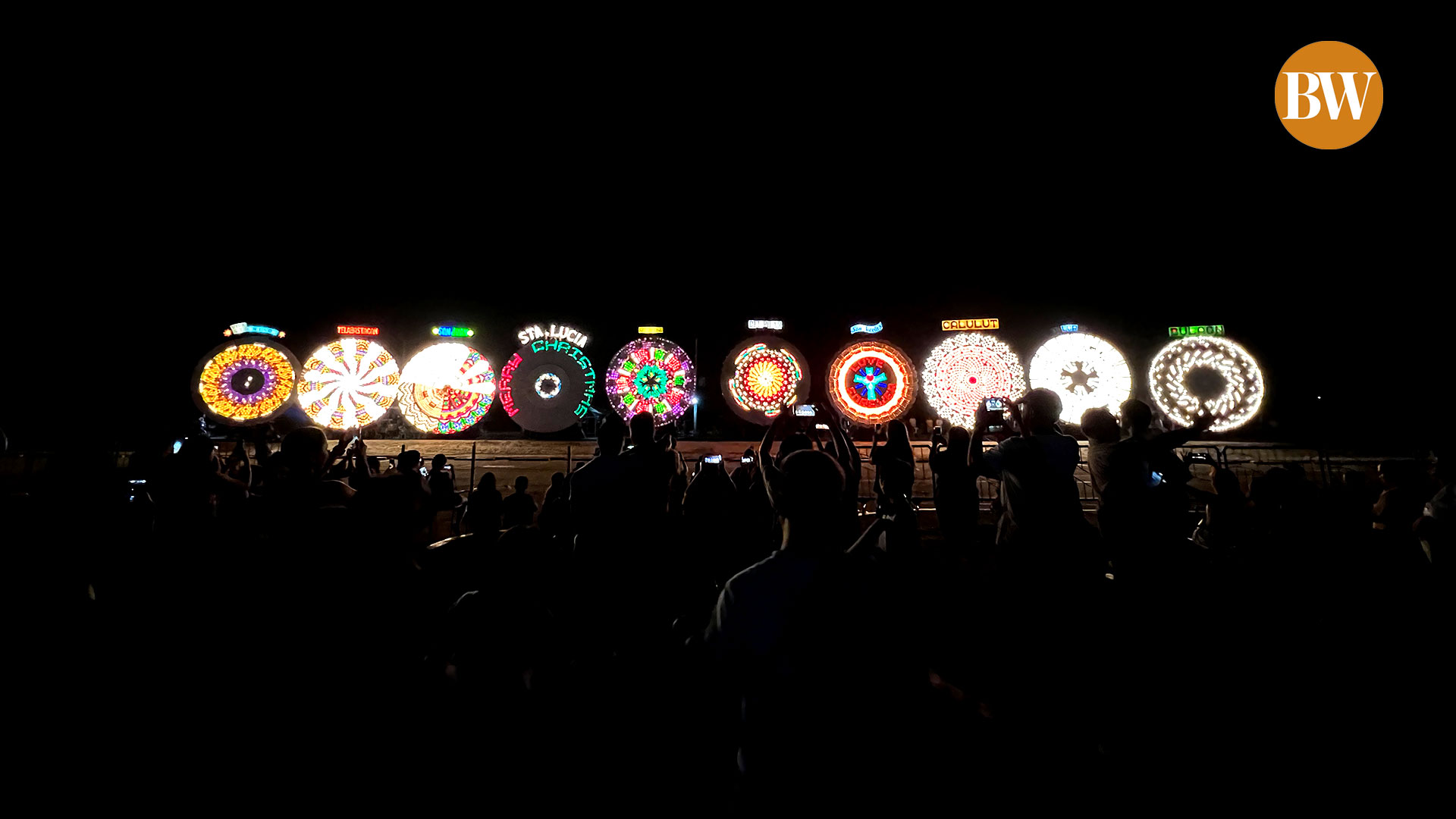



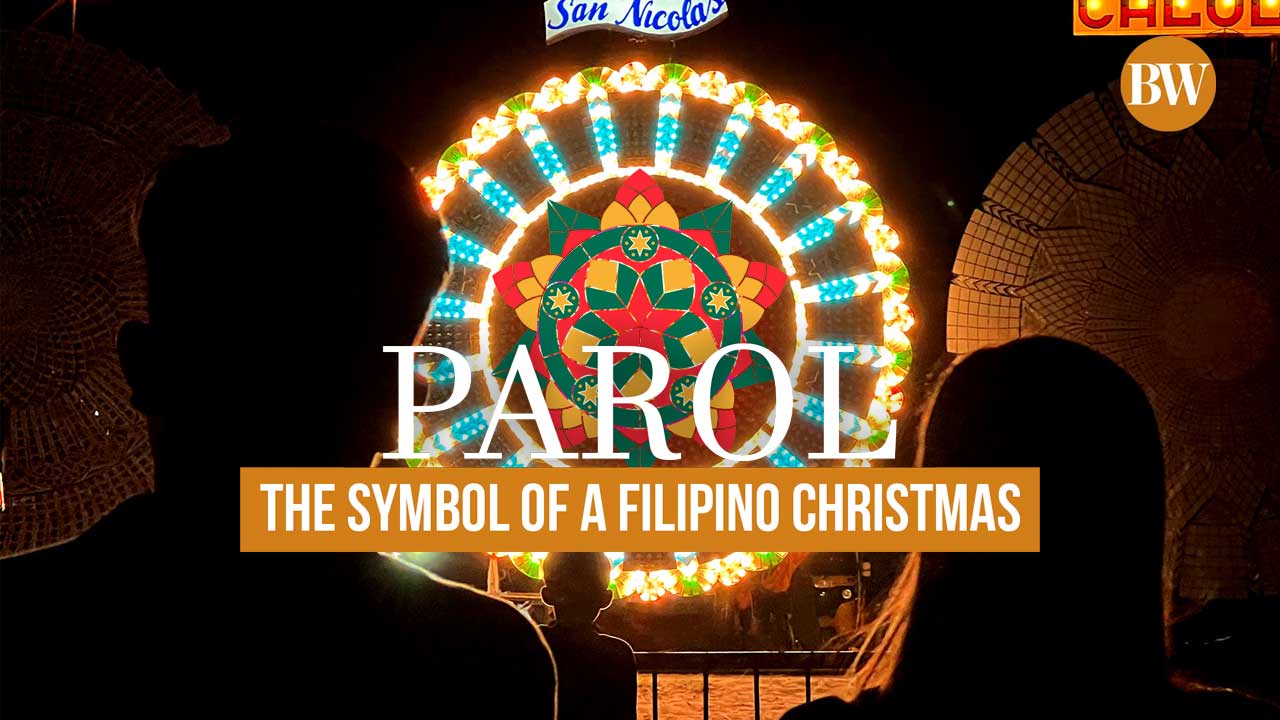

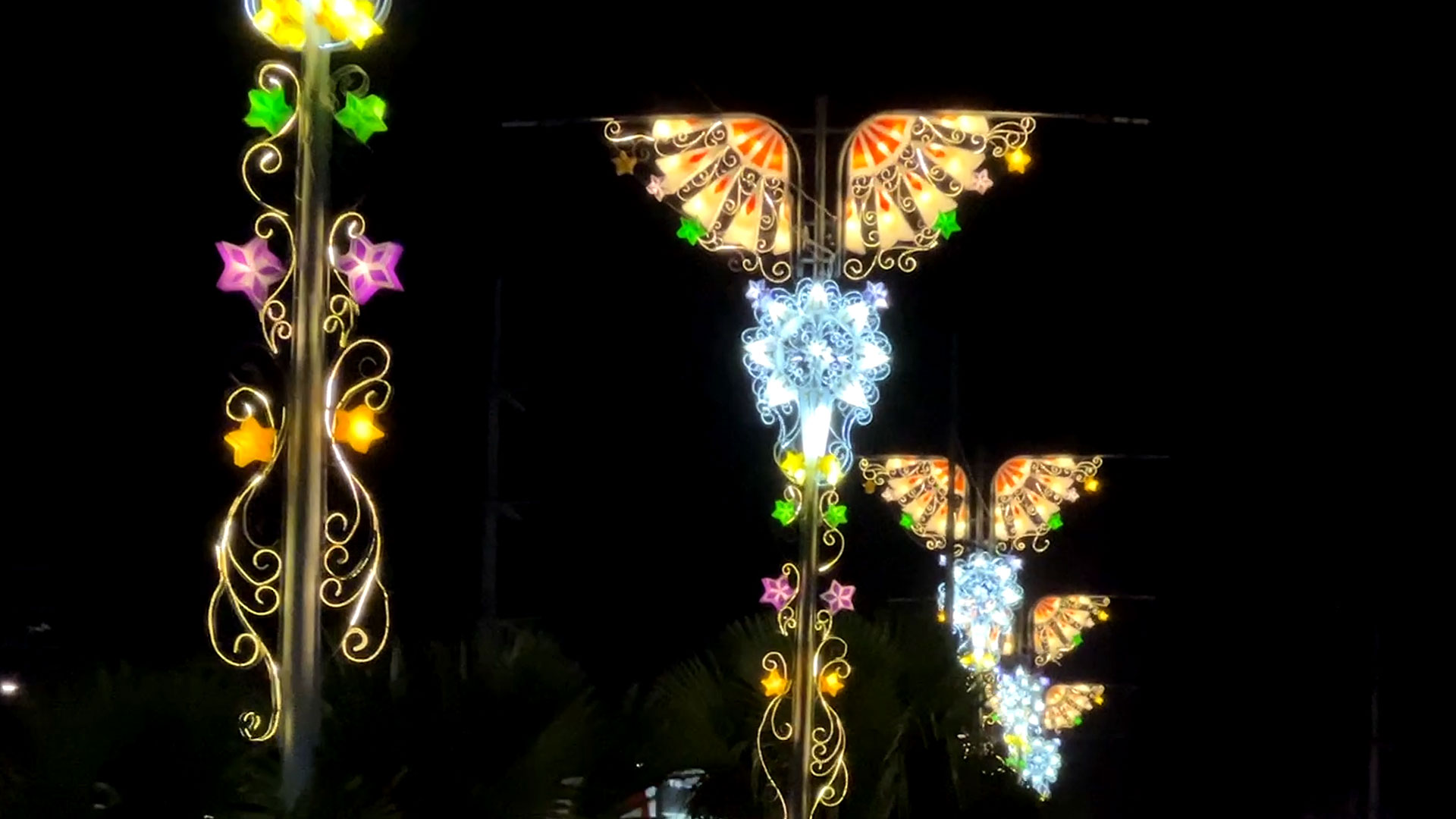

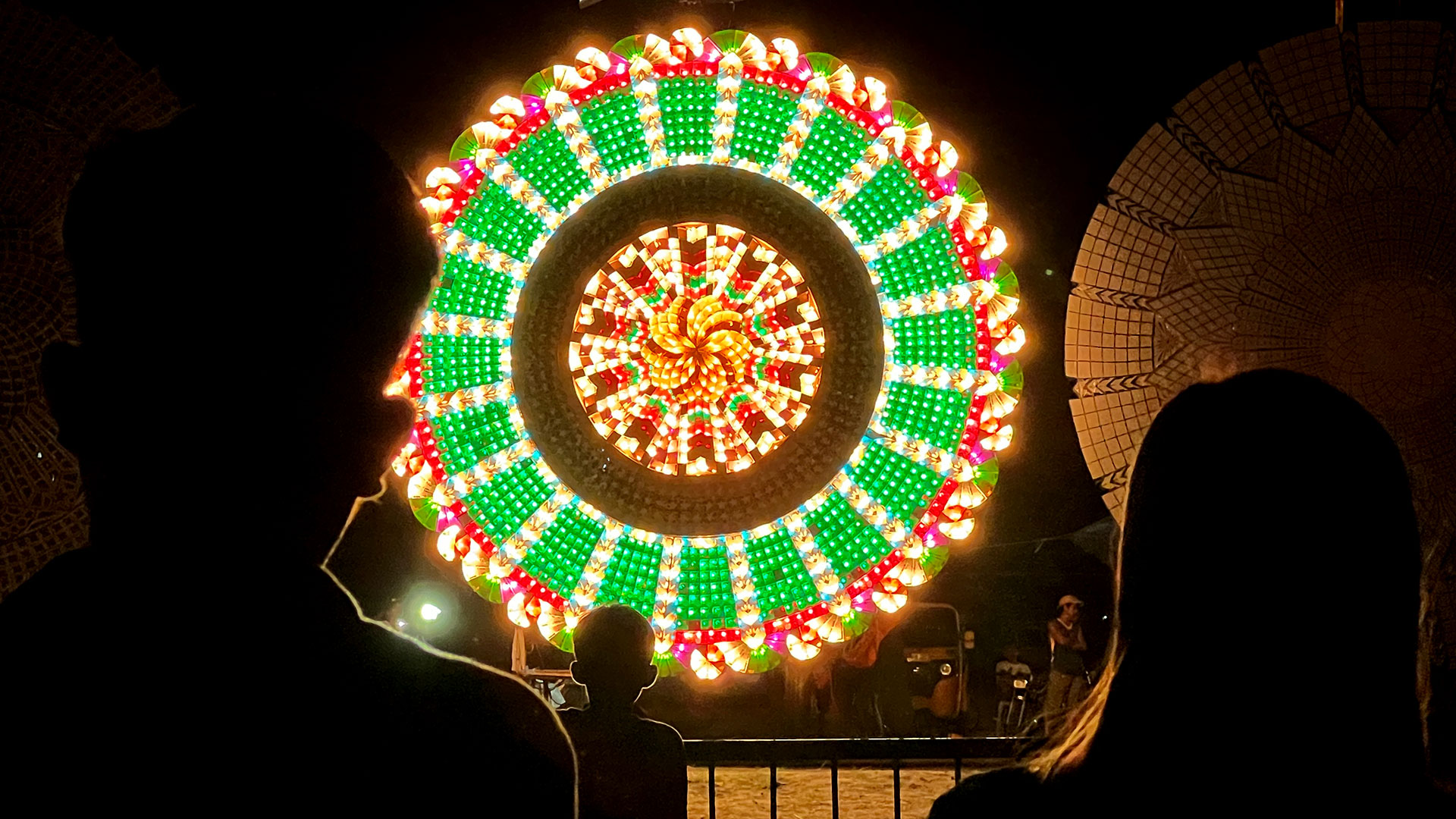
Just as the biblical Wise Men were guided by the Star of Bethlehem, the celestial phenomenon associated with the birth of Christ, so does the parol serve as an emblem of Filipinos as they celebrate Christmas.
For what speaks “Filipino Christmas” more than the parol?

The parol is a star-shaped lantern that traditionally adorns Philippine households every Christmas. The country is known for its lengthy Yuletide season, which starts gaining momentum during the –ber months, and then stretches all the way to the feast of the Epiphany (commemorating the arrival of the Wise Men), celebrated on January 6th.
“Iba hila niya [The parol has a compelling tug],” said master craftsman and the touted Parol King himself, the Pampanga native Rolando S. Quiambao.

“Parang si Jose Mari Chan, pag kumanta na siya [Much like Jose Mari Chan when he sings],” Mr. Quiambao said, likening the enduring appeal of parols to Mr. Chan’s timeless Christmas songs..
“Actually, it’s a tradition. There are no schools that teach how to make lanterns. There are no books written about it,” he added in a December 19 interview in his San Fernando, Pampanga, workshop.



A testament to folk engineering
Parol makers aren’t trained electrical engineers nor interior designers, yet they are able to come up with intricate designs each year, according to Arwin Paul A. Lingat, secretary of the Sub-Commission on Cultural Communities and Traditional Arts of the National Commission on Culture and the Arts.
“Minsan may technique. If they want a violet color, iswi-switch nila yung [they will switch the] red and blue color of the light bulb. It’s a technique of ingenuity that we attribute to folk engineering,” he said in a December 14 Zoom call.
The giant lanterns that are a staple in San Fernando, Pampanga’s annual lantern parade, for instance, is operated through a mechanism called a rotor. Each of these rotors are wielded behind the scenes – much like a steering wheel – by individuals, who in turn are guided by a rotor conductor.
A giant lantern typically has 7-10 cylindrical rotors.
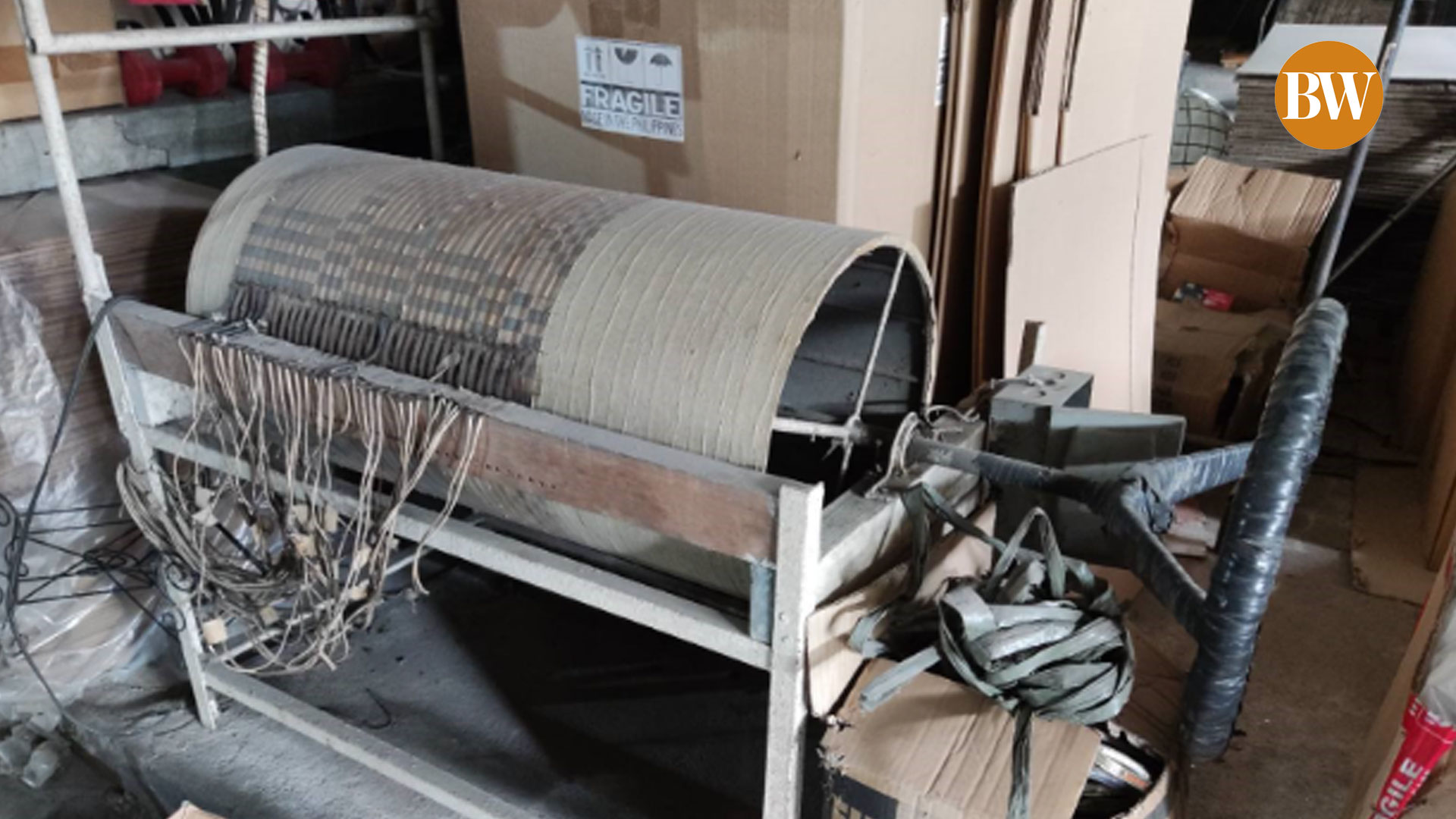
It takes a community to build a lantern, Mr. Lingat added.
“The beauty of watching a giant lantern is also at the back of the giant lantern, when you can see the lantern makers dancing and playing those rotors,” he added.
“Actually, meron namang mga [there are] computerized giant lanterns…but again, why do they still use a manual play of lights? You know what their reason is? [It’s that] computerized lanterns limit their design as well as… the complexity of their play of lights.”
Parol as a symbol has transcended its religious origins, Mr. Lingat also said.

Although the technique of lantern-making precedes the Spanish era, the concept of parols first came about from Catholic processions called lobenas, which used candles to light the path of devotees.
The cold breeze of the amihan (the cool northeast wind that lasts from October to end-March) kept putting out the light from the procession candles, Mr. Lingat related, which is why the devotees came up with a covering for them. Lanterns eventually dotted the processional route, he said.
Mr. Quiambao, who designed the first computerized giant lantern, added that the human factor is a necessary component in Pampanga’s yearly parade.
“Hindi na siya festival kung wala nang human factor – kasi minsan dun nagkakatalo, sa teamwork [It stops being a festival when the human factor is removed – because sometimes the deciding factor is teamwork],” he said. “Yung ligligan, from the word itself, ibig sabihin nun matira matibay [The word “ligligan” itself means only the strongest is left standing].”
Computerizing the entire process also does away with the excitement, Mr. Quiambao told BusinessWorld.
For every adversity, an opportunity

Calamity
Pampanga was one of the most affected provinces when Mt. Pinatubo spewed volcanic ash in on June 15, 1991, following a 7.7-magnitude earthquake. That same day, Typhoon Diding (international name: Nunya) ended up dispersing volcanic ash in Luzon, the Pacific Ocean, and even mainland Southeast Asia. Mr. Quiambao said this phenomenon triggered an exodus among Kapampangans (or Pampanga residents). “Kumakatok na yung lahar papunta na dito,” he said. “Yung mga ilog, natabunan. Walang madaanan yung tubig kaya puro baha [Lahar was knocking at our doorstep. All the lakes were covered with it. The floods had no place to pass through so everything was flooded].”
The then-San Fernando mayor commissioned Mr. Quiambao to beautify the town through his craft – to better entice its residents to return.
“Galing kami sa pinakamahirap…Dun sa lahar, wala ng tao dito [We went through that most difficult period…everyone left because of the lahar],” Mr. Quiambao said.
Capital

As with most small business owners, capital is also a concern in the industry. Mr. Quiambao obtained a loan from the Department of Social Welfare and Development’s Self-Employment Assistance-Kabuhayan Program, and subsequently won an award from Malacañang for successfully multiplying the money that was loaned him.
Philippine banks continued to miss the 10% lending quota for small and medium enterprises in the first nine months of 2023, according to the Philippine Central Bank in a January 3 news item.
San Fernando, on the other hand, has been recognized as one of the top model cities of the country in the 2017 Philippine Model Awards.
Copyright

A third contention is copyright issues.
At times, people would think he gave away his designs – when in fact they were reproduced without his permission, Mr. Quiambao said.
He said that when he consulted the Department of Trade and Industry (DTI), he realized the unsustainability of having to register each design of his.
“Ang gastos…tapos papalit-palit ang design. E di ang dami mong nirehistro [It’s costly, especially if you keep changing designs. That would entail registering each and every one of them],” he added.
“Halimbawa, nag-design ako ng poinsettia, tapos nilagyan lang ng dahon ng iba. Paano mo hahabulin [If you design a poinsettia, for instance, and then someone else adds a leaf to it, how then will you go after that person]?” he asked. “Kaya sabi namin, nakatulong ka na rin lang [That’s why we’ve since adopted the perspective of, ‘Well, at least we were able to help others’].”
Hangga’t may Pasko, may negosyo [The business will endure for as long as Christmas is celebrated]
The COVID-19 pandemic did not hurt the parol industry at all, and human psychology played a role in this, according to Mr. Quiambao.
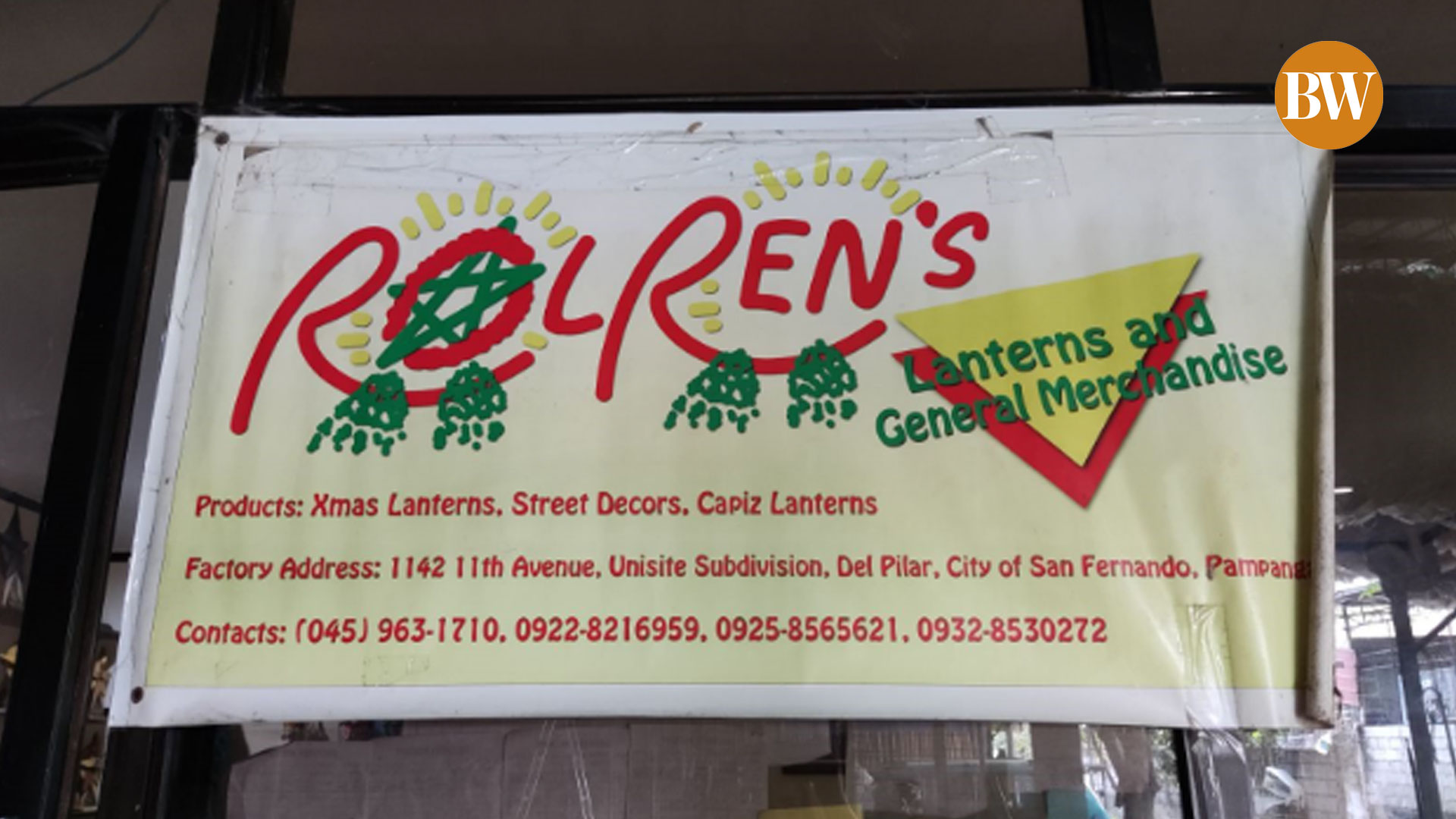
RolRen’s, Mr. Quiambao’s establishment.
People were depressed during the pandemic and did not shy away from buying star-shaped lanterns, he told BusinessWorld:
“Naburyong sila. Gusto nila maging masaya, at gusto nila gumastos [People were bored. They wanted to be happy, and they wanted to spend].”
“Hanggang kailan may Pasko, may parol [Parols will exist for as long as Christmas exists].”
“Hanggang kailan may Pasko, may parol [Parols will exist for as long as Christmas exists].”

Overseas Filipino workers (OFWs) – who prefer lanterns in traditional colors – likewise provide a steady market.
OFWs, Mr. Quiambao said, buy lanterns between January to February, as the beginning of the year to coincide with their holidays in the Philippines. Exporters, meanwhile, start their purchases in February.
“Kumukuha kami dalawang ship lang. Totoo nito, napakalaki ng market hindi mo kaya [We only get two ships’ worth of orders total. The market is so huge you won’t be able to handle the demand],” he said. “Kahit pagsama-samahin mo nagpaparol dito, hindi makakaya yung demand [Even if you combine all the parol makers here, that still wouldn’t be enough to keep up with the demand].”
Every Filipino wants a parol in their home, per Mr. Lingat.
“A Philippine Christmas doesn’t anymore talk about Catholicism or religiosity… A parol is a major part of every Filipino home,” he said. “That is our best symbolic identity of a Filipino Christmas.”
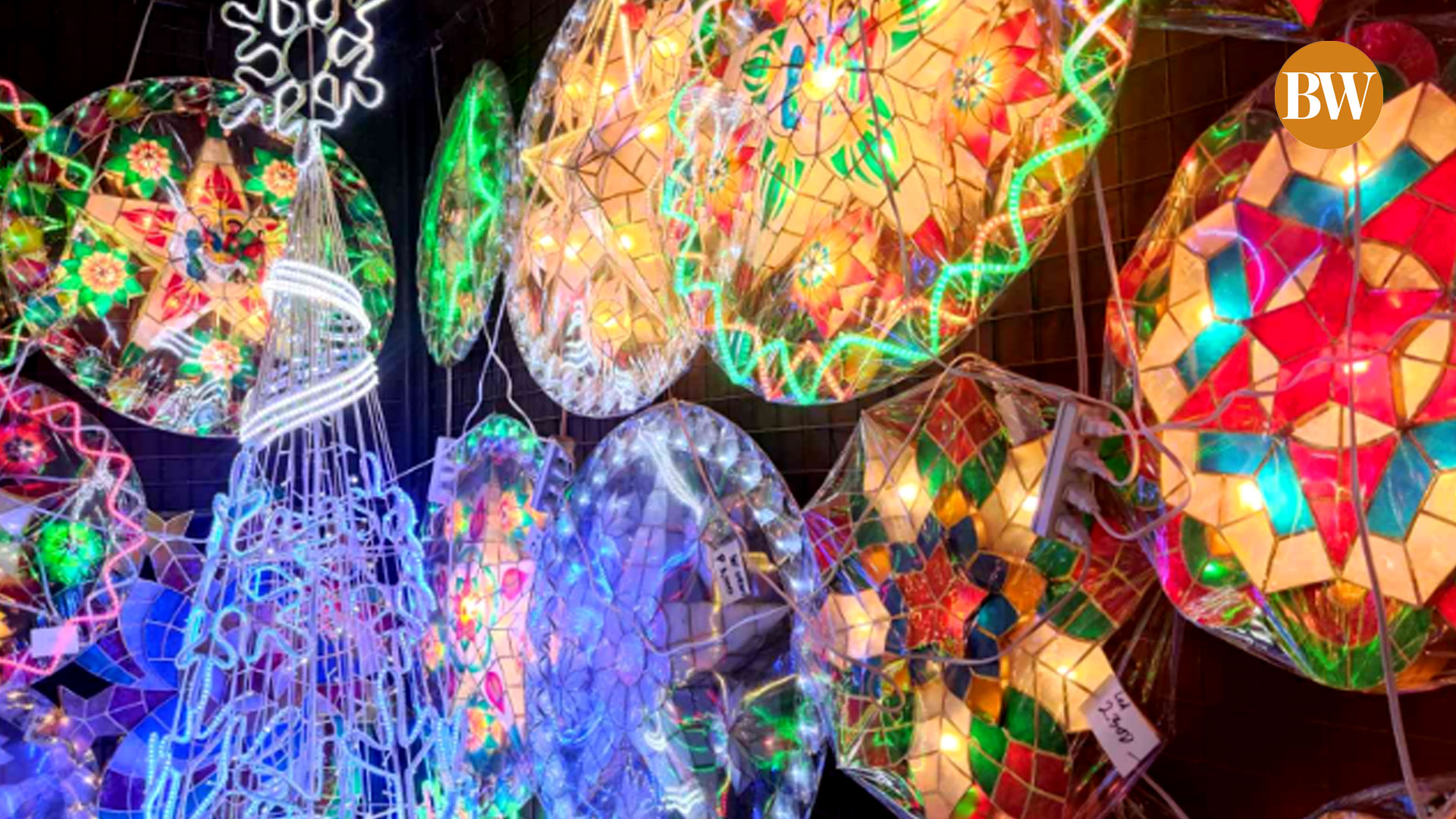
Reflective of Kapampangan characteristics
Mr. Quiambao said parols are reflective of the character of the Kapampangan: joyful, extravagant, and proud.
At the annual lantern parade, “almost P1,000,000 yung gastos, pero yung premyo P150,000 lang. It’s more on honor kasi [participants shell out up to P1,000,000, even if the prize is only P150,000. It’s a matter of honor],” he pointed out.

At a community level, the city also wants to hold on to its distinction of being the Christmas Capital, the Home of the Giant Lantern, and the City of Lanterns, he added.
“Ang word na mayabang is positive e… kaya nga nakaka-create ka ng [The word “proud” is positive to us…that’s what enables us to create] something different. It’s in our blood,” he said.

It’s his children who handles the business nowadays. With their know-how in information technology, both his children also help translate his ideas into graphic representations for client presentations. Mr. Quiambao quotes a line from “Atin Cu Pung Sing Sing,” and says that – like the theme of the Kapampangan folk song – the current crop of parol makers is ensuring younger generations are trained in the tradition, so that it isn’t lost. “Kung hawak mo yung binhi, pero hindi mo naman sinasabog sa lupa, walang tutubo, ‘di ba [If you have seeds but don’t sow them, then none of them will grow, right]?” he pointed out.
Credits: Report by Patricia Mirasol. Produced by Jino Nicolas. Photos and videos by Earl Lagundino and Joseph Emmanuel Garcia. Layout and web development by Criselda Valentin.



